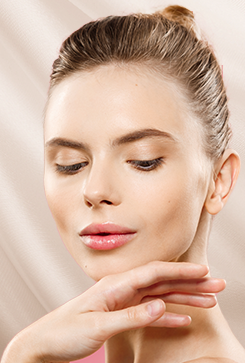
PRP is the acronym for “ Platelet Rich Plasma.” Platelets are one of the shaped elements in our blood. When there is an injury, they concentrate on the area where the bleeding is, clogging the vein and stopping the bleeding. In the meantime, they trigger recovery by secreting the growth factors they produce and carry.
These growth factors are mainly VEGF(Vascular Endothelial Growth Factor), PDGF(Platelet Derived Growth Factor) TGF-β (Transforming Growth Factor β), and EGF (Epidermal Growth Factor). In other words, platelets are the key elements in repairing the damage that occurs in the body.
Due to the growth factors that they secrete, they invoke cells such as macrophages and fibroblasts that maintain healing, to the damaged site. These cells produce new and undamaged tissues by performing processes such as collagen synthesis at the site of damage, increased vascularization, and the formation of organic infrastructure.
The goal of this treatment is to concentrate the platelets in the person's blood and infuse them into the desired area intensively. This way, growth factors will be secreted in this region, new collagen and elastic fibers will be produced, vascularization will be increased, new and undamaged tissues will be produced, and damaged tissues will be renewed.
First, 20-25 cc of blood is taken from the person. This blood is subjected to certain chemical and centrifugal processes and the platelets in it are isolated, purified, and intensified. The obtained PRP is infused to the desired region.

People who are now in their middle age and with light wrinkles on their fatigued skin will benefit from PRP treatment. The fullness and brightness of the skin will improve and become more elastic and tighter.
PRP is mainly used in aesthetic plastic surgery in the following situations:
PRP is mostly infused through mesotherapy, that is, by injecting it gradually at small intervals in the desired site subcutaneously. To prevent pain during this period, local anesthetic creams are applied previously.
It can also be used after a derma roller application in the form of a mask or by injecting it as a filler.
It is repeated 3 or 4 times with a week 2–3-week interval for a favorable effect. It is recommended to repeat every 6 months to keep the skin bright and fresh.
Since the elements concentrated from the person's blood are used in this application, no side effects or allergies are expected as long as the sterile conditions are maintained and a quality PRP kit is used.
Recently, it has been called a “stem cell” application for PRP treatment. This is a deception, a quackery. People are deceived by naming it “stem cell therapy.”
PRP is completely different from stem cell treatment: simpler, cheaper, a more practical treatment. Stem cell application requires much more sophisticated conditions and laboratories. The methods of obtaining, effects, and application are completely different.
Yes, we can perform Stem Cell Applications. We isolate the stem cells in fat tissues taken from the person and inject them into the desired areas. It is also possible to enrich this tissue with PRP if necessary.
Address: Fulya Mah. Büyükdere Cad No:74 Torun Center Flat Office 207 Şişli /İstanbul
Contact Us
+90 (505) 973 48 73